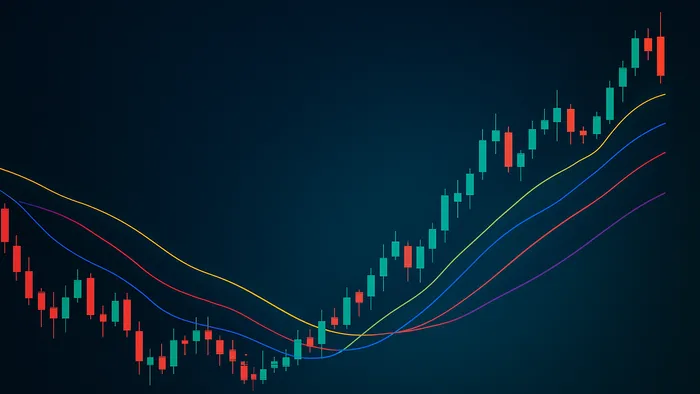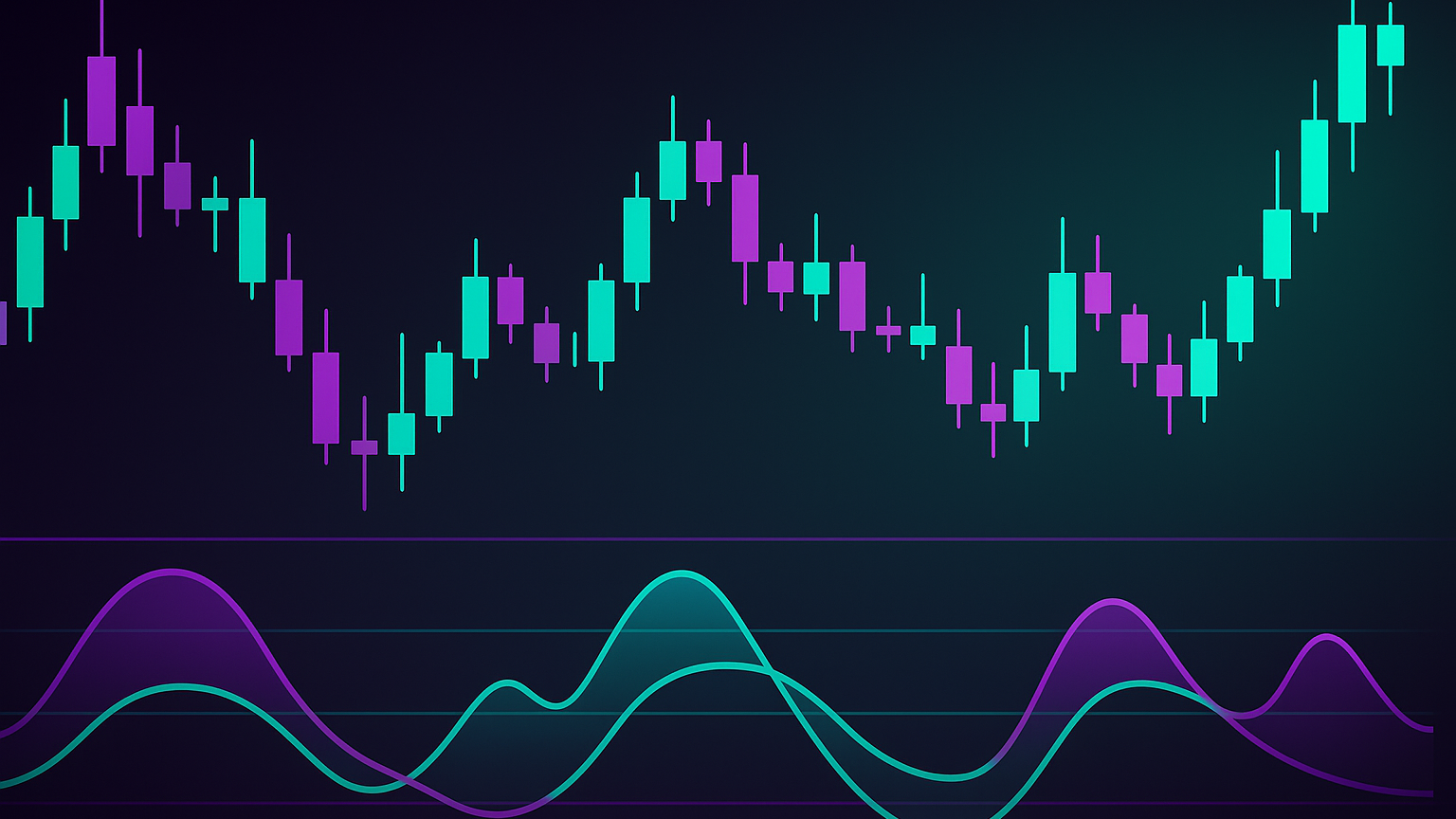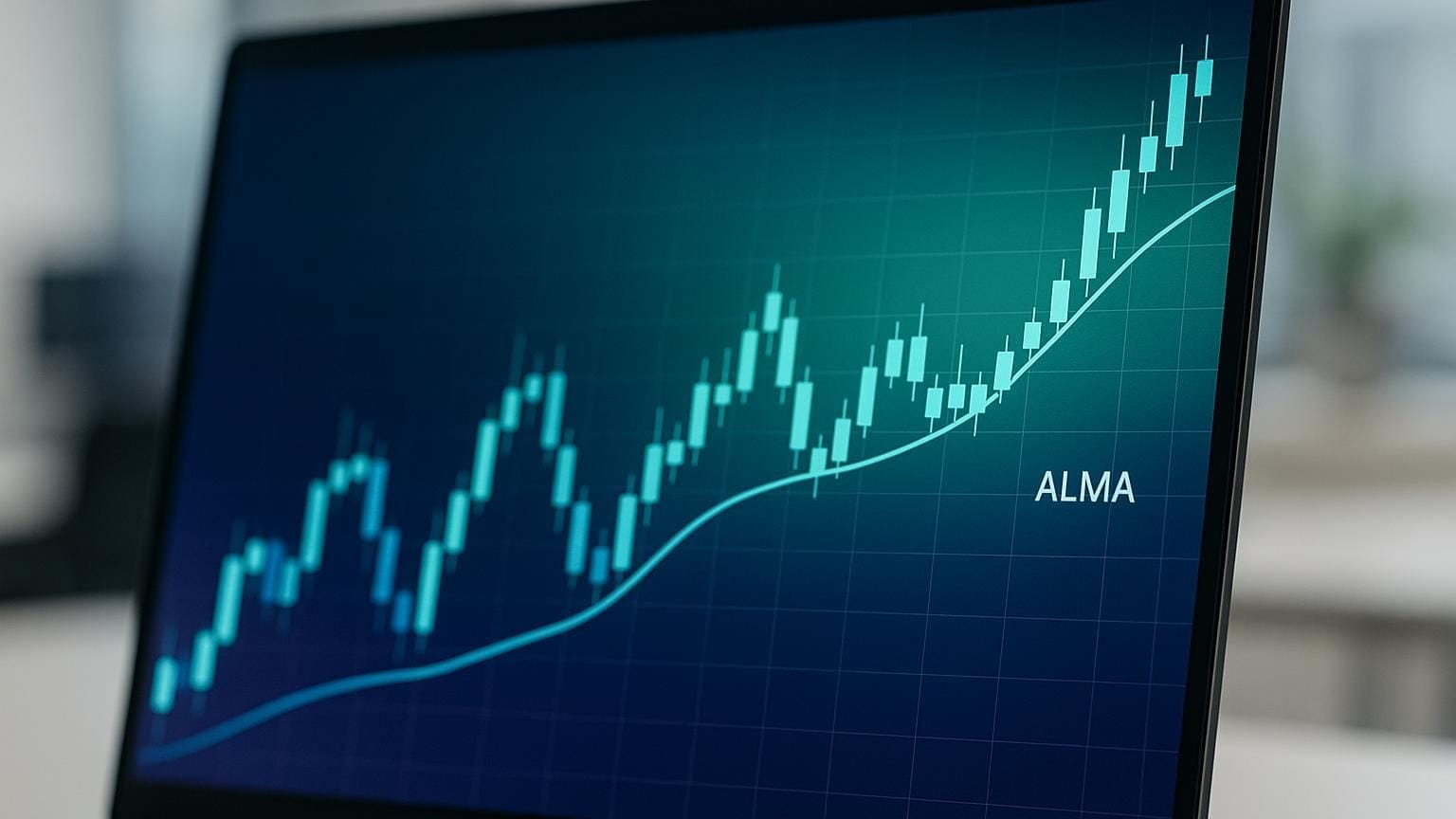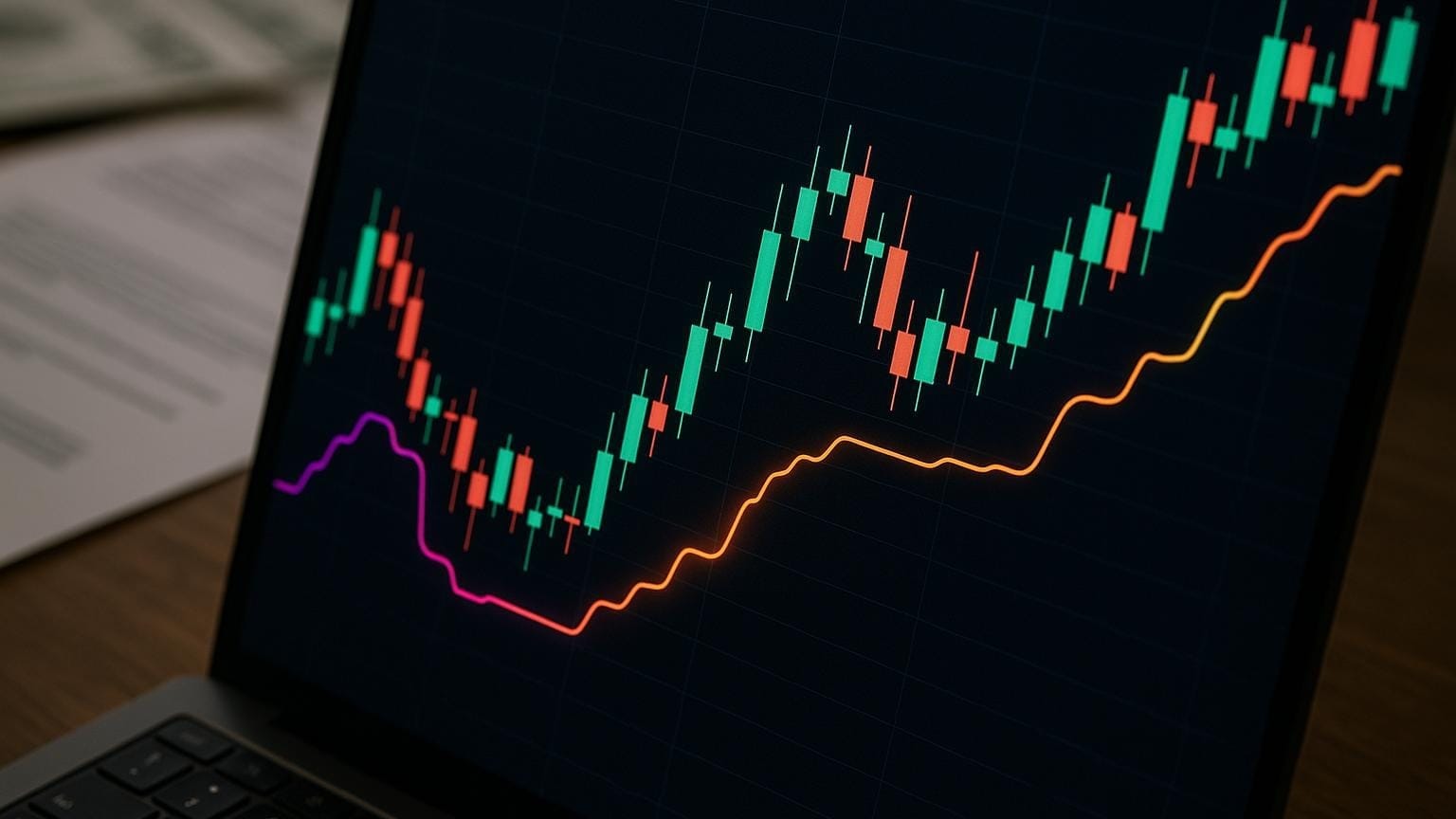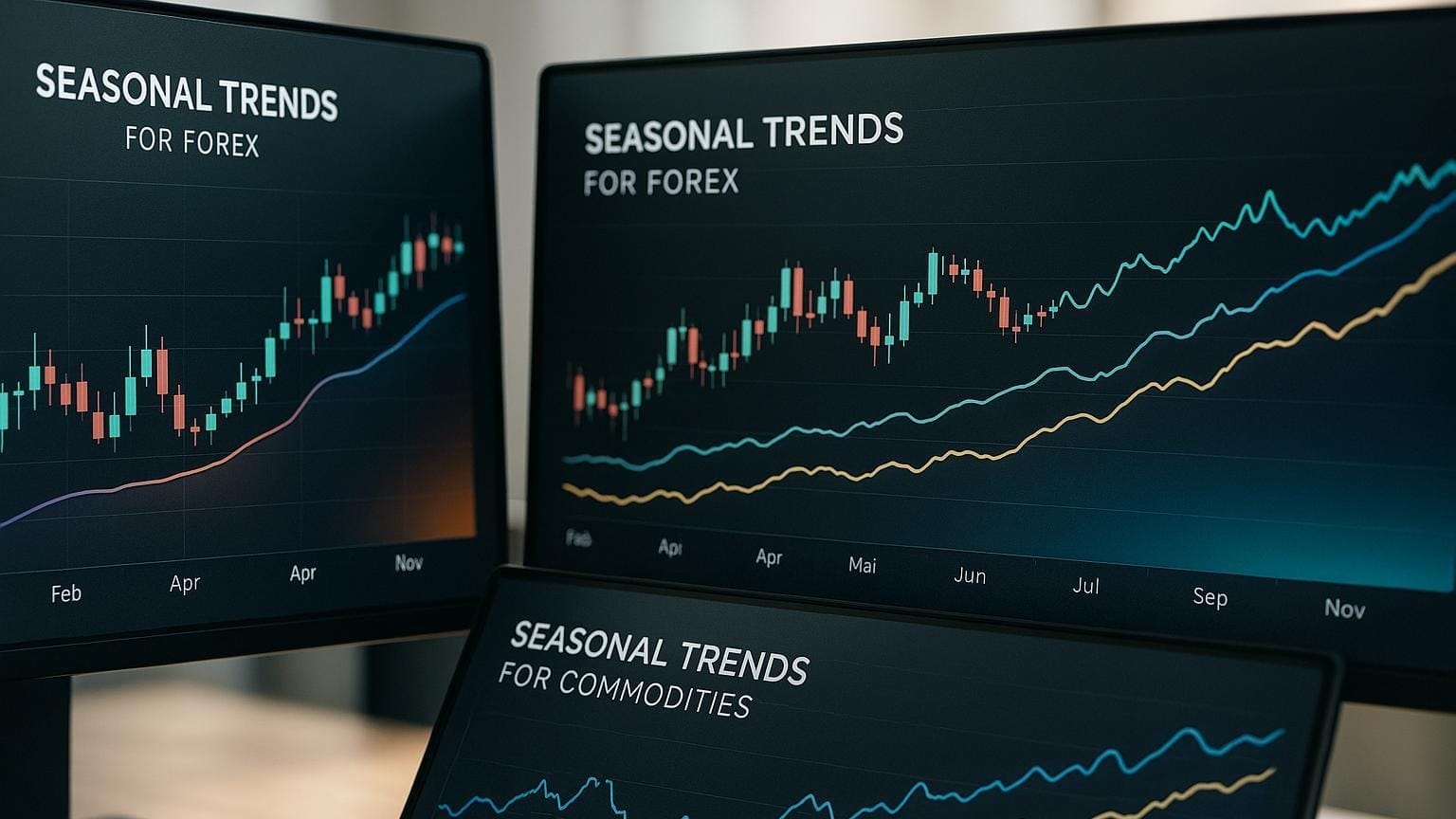Explore five effective SMA filters for intraday trading to enhance trend identification and refine your trading strategies.
Simple Moving Averages (SMAs) are key tools for intraday trading, helping traders identify trends, spot entry/exit points, and reduce market noise. This guide covers 5 SMA filters you can use to refine your trading strategies:
- 5-8-13 SMA Filter: Uses Fibonacci-based SMAs for quick trend identification and versatile timeframes (1-min, 5-min, 15-min).
- 20-50 SMA Crossover: Detects intermediate trends with Golden Cross (uptrend) and Death Cross (downtrend) signals.
- 130 SMA on 15-Minute Charts: Tracks medium-term trends, ideal for reversals and managing short-term positions.
- SMA Ribbon Analysis: Combines multiple SMAs to visualize trend strength and direction.
- SMA + Volume: Enhances SMA signals by validating trends with volume analysis (e.g., VWAP).
Quick Comparison
| SMA Filter | Purpose | Best Timeframe | Key Feature |
|---|---|---|---|
| 5-8-13 SMA | Quick trend spotting | 1-min, 5-min, 15-min | Fibonacci-based alignment |
| 20-50 SMA | Intermediate trend detection | Variable | Golden/Death Cross signals |
| 130 SMA | Medium-term trend tracking | 15-min | Percent change for trend reversals |
| SMA Ribbon | Visualize trend strength | Variable | Expanding/contracting ribbon patterns |
| SMA + Volume | Validate trends with volume | 1-min to 1-hour | Combines VWAP with SMAs |
These filters can be combined with other tools like RSI, MACD, or price action analysis to refine results. Start with the one that matches your trading style and timeframe for better decision-making.
1. 5-8-13 SMA Filter Setup
Trend Identification
The 5-8-13 SMA filter setup uses three simple moving averages based on Fibonacci numbers. When the shorter-term SMAs (5 and 8) move above the 13-period SMA, it signals the start of a trend. In an uptrend, these averages align with the 5 above the 8 and the 8 above the 13, visually confirming the trend's strength. This alignment not only indicates the trend but also provides clear guidelines for when to enter or exit trades.
Entry/Exit Signal Clarity
During a trading session with Invesco QQQ Trust (QQQ), this setup generated two profitable uptrend signals:
- First leg: Spanned 51 five-minute bars, resulting in a gain of 2.59 points (0.79%).
- Second leg: Covered 35 five-minute bars, yielding 2.64 points (0.80%).
Timeframe Suitability
The 5-8-13 SMA setup works across different intraday timeframes, making it versatile for various trading strategies:
| Timeframe | Purpose | Best For |
|---|---|---|
| 1-minute | Quick scalping | Capturing short-term moves |
| 5-minute | Day trading | Balancing signals and noise |
| 15-minute | Longer holds | Confirming broader trends |
Combining with Other Indicators
Pairing this SMA filter with volume analysis can improve decision-making for intraday traders. During strong trends, prices often respect the 8- and 13-period SMAs as support or resistance, helping traders manage risk more effectively. Paying attention to how prices interact with these SMAs can provide early warnings of unfavorable conditions. Adjusting the setup to match your trading style and risk tolerance is key. Additionally, this filter can help identify high-risk market conditions where stepping back from active trading may be the safer choice.
2. 20-50 SMA Price Crossover
Identifying Trends
The 20-50 SMA crossover is a useful method for spotting intermediate-term trends. When the 20-day SMA crosses above the 50-day SMA (Golden Cross), it suggests a possible upward trend. Conversely, when the 20-day SMA dips below the 50-day SMA (Death Cross), it points to a potential downward trend.
Clear Entry and Exit Signals
Crossover points act as reliable entry and exit signals. By using two moving averages instead of one, traders can reduce the likelihood of false signals or sudden reversals. To validate these signals, consider the following:
| Market Condition | Signal Type | Confirmation Factors |
|---|---|---|
| Uptrend | Buy | Golden Cross + rising volume + price above both SMAs |
| Downtrend | Sell | Death Cross + rising volume + price below both SMAs |
| Sideways Market | Hold | SMAs moving horizontally with frequent crossovers |
Fine-tune the strategy based on the specific market environment for better results.
Choosing the Right Timeframe
Adapting the 20-50 SMA crossover to your preferred trading timeframe is crucial. Here's how it works in different market conditions:
| Market Type | Timeframe | Why It Works |
|---|---|---|
| High Volatility | 20-50 SMA | Captures quicker signals during rapid price movements |
| Low Volatility | 20-50 SMA | Provides steady signals with less market noise |
Combining with Other Indicators
To improve accuracy, pair the moving average crossover strategy with additional tools. Some effective combinations include:
- RSI: Helps identify overbought or oversold conditions.
- Volume Analysis: Confirms the strength of the trend.
- Price Action: Observing patterns near crossover points adds further clarity.
Using multiple indicators together helps filter out false signals and ensures better confirmation of trend shifts.
3. 130 SMA on 15-Minute Charts
Trend Identification
The 130 SMA on 15-minute charts smooths price data over approximately 32.5 hours, helping traders identify medium-term trends.
Percent Change = ((Last Price − SMA) / SMA) × 100
| Price Relative to SMA | Signal | Trading Implication |
|---|---|---|
| Above 130 SMA | Positive % Change | Indicates a possible uptrend |
| Below 130 SMA | Negative % Change | Suggests a potential downtrend |
| Crossing 130 SMA | Zero % Change | Signals a potential trend reversal |
Entry/Exit Signal Clarity
The following table outlines how to define entry and exit points based on price behavior around the 130 SMA:
| Signal Type | Entry Criteria | Exit Strategy |
|---|---|---|
| Uptrend Entry | Price moves above SMA after consolidating | Exit when price closes below SMA |
| Downtrend Entry | Price drops below SMA after consolidating | Exit when price closes above SMA |
| Swing Trade | Price temporarily crosses SMA in the opposite direction of the trend | Exit when price re-aligns with the trend |
Timeframe Suitability
This setup works well for intraday trading on 15-minute charts. It effectively captures price trends over a 5-day trading period while minimizing the impact of market noise. It’s particularly useful for identifying trend reversals and managing short-term positions.
Combining with Other Indicators
Pairing the 130 SMA with a 10 SMA can enhance trading strategies. When these two SMAs converge, it often signals a potential breakout – commonly referred to as a “pinch play”:
| Pinch Play Signal | Confirmation Indicators | Expected Outcome |
|---|---|---|
| Upward Break | Price is above both SMAs | Suggests a bullish trend might follow |
| Downward Break | Price is below both SMAs | Points to a possible bearish trend |
| Convergence Zone | Price moves sideways between SMAs | Indicates a potential breakout setup |
5-8-13 EMA Scalping: Complete Tutorial for Beginners
4. SMA Ribbon Analysis
SMA Ribbon Analysis builds on earlier moving average strategies by plotting multiple averages to highlight trend strength and direction. The relationship between short-term and long-term averages can indicate whether a trend is moving upward, downward, or staying neutral. Key ribbon patterns include: an expanding ribbon (which may signal a trend losing momentum), a contracting ribbon (often pointing to the start of a new trend), and a parallel ribbon (reflecting a steady and strong trend). These patterns can lead directly to actionable signals for entering or exiting trades.
Entry and Exit Signals
The ribbon's structure provides straightforward cues for entering and exiting trades. For example, when short-term moving averages cross above long-term ones, it could signal a buying opportunity. Conversely, a cross below the long-term averages might suggest it's time to sell.
"This plots a moving average ribbon, either exponential or standard. It provides an easy and fast way to determine the trend direction and possible reversals." – MadridWizard
Versatility Across Timeframes
The Madrid Moving Average Ribbon study works well across different timeframes, making it suitable for intraday trading. Whether you're scalping or trading intraday swings, you can adjust the moving average settings to match your trading strategy and the market's pace.
Combining with Other Indicators
You can pair SMA Ribbon Analysis with other tools like volume or RSI to improve decision-making. Adjusting the moving average periods or switching between SMA and EMA can help fine-tune how responsive the ribbon is. A ribbon that is smooth and evenly spaced, supported by volume trends, can confirm the strength of a trend.
5. SMA and Volume Combined
Integrating volume analysis with SMA strategies can improve the accuracy of intraday trend signals.
Trend Identification
Using SMAs alongside volume analysis helps confirm price trends. When volume aligns with price movements, it strengthens the reliability of those trends.
Entry and Exit Signals
Pairing volume data with SMA signals reduces the risk of false breakouts, making it easier to decide when to enter or exit trades. The Volume Weighted Average Price (VWAP) is particularly useful for spotting institutional trading activity.
Best Timeframe Combinations
Certain SMA and volume setups work better for specific intraday timeframes. Here's a quick guide:
| Timeframe | Recommended SMA Setup | Volume Focus |
|---|---|---|
| 1-minute | 50-day SMA | Compare to the previous day's volume |
| 5-minute | 20-day SMA | Watch for relative volume spikes |
| 15-minute | 20-day SMA | Track cumulative volume trends |
| 1-hour | 20/50 SMA combination | Look for institutional volume patterns |
This approach enhances traditional crossover strategies, which will be discussed further.
Integration with Other Indicators
Adding volume analysis to dual moving average crossover strategies creates a more detailed trading framework. Tools like Volume Spread Analysis (VSA) can provide deeper insights into price action. Short-period SMAs are especially effective for tracking intraday momentum.
For those seeking advanced features, LuxAlgo provides advanced indicators that combine volume analysis with moving averages, making it easier to spot institutional trading and potential trend reversals.
Conclusion
The success of SMA filtering depends on aligning your chosen filter with the market's behavior, your risk tolerance, and your trading preferences. Keep in mind that the effectiveness of these filters can vary based on the market environment and the asset being traded.
Performance Metrics
Studies highlight the potential of SMA strategies for better risk-adjusted returns. For example, from 1973 to 2012, a 10-month SMA timing strategy delivered an annualized return of 10.5%, compared to 9.9% for a buy-and-hold approach. The Sharpe ratio for the SMA strategy was 0.73, significantly higher than the 0.44 achieved by buy-and-hold.
Market Condition Considerations
Different SMA filters excel in specific market scenarios. Here's a breakdown:
| Market Environment | Recommended SMA Filter | Key Consideration |
|---|---|---|
| High Volatility | 5-8-13 Setup | Quick response to price changes |
| Trending Markets | 20-50 Crossover | Confirms strong trends |
| Range-bound Markets | 130 SMA | Identifies support/resistance |
| Crisis Periods | SMA Ribbon | Offers multiple confirmation levels |
| High Volume Markets | Volume + SMA | Validates signals effectively |
Optimization Strategy
- Dynamic Adjustment: Adjust SMA periods to match market volatility.
- Volume Integration: Combine SMA signals with volume data to confirm trend strength.
- Risk Management: SMA strategies have shown a maximum drawdown of −9.5%, much lower than the −46.0% seen with traditional approaches.
Fine-tune these strategies further by incorporating other technical tools.
Advanced Implementation
For a more refined approach, pair SMA filters with additional indicators like RSI to reduce false signals. LuxAlgo simplifies this process by offering advanced indicators and an AI Backtesting platform that combine volume analysis with SMA strategies. However, be aware that trend-following strategies may underperform in certain post-crisis environments. Stay flexible and adjust your methods as market conditions evolve, taking advantage of advanced tools to maintain an edge.
FAQs
What SMA to use for day trading?
The 5-8-13 SMA combination, based on Fibonacci intervals, is a popular choice for day trading. This setup helps traders quickly spot trend shifts, identify support and resistance levels, and pinpoint entry and exit opportunities.
"While searching for the best technical indicators may be endless, the 5-8-13 SMA combination offers day traders a robust framework. Its strength lies not just in generating buy and sell signals but in its ability to adapt to different trading styles and time frames." – Investopedia
Although the 5-8-13 setup is widely used, the best SMA choice ultimately depends on the specific market conditions and the trader's approach.
Which SMA is best for intraday?
For intraday stock trading, the 40 and 200 SMA combination is often a dependable choice. However, the effectiveness of any SMA setup will vary based on trading preferences and market behavior.
To get the most out of SMAs for intraday trading:
- Use tools like RSI or MACD to confirm signals.
- Pay attention to volume during breakouts to assess signal strength.
- Test different strategies under various market scenarios before making trades.
For more precision, you can combine moving average crossovers with momentum indicators. For example, one approach integrates the Stochastic indicator (9-3-3) as a filter. In this strategy, traders enter long positions when the price moves above the SMA 34 (and SMA 34 is above SMA 200) while the Stochastic %K line rises above 20.


